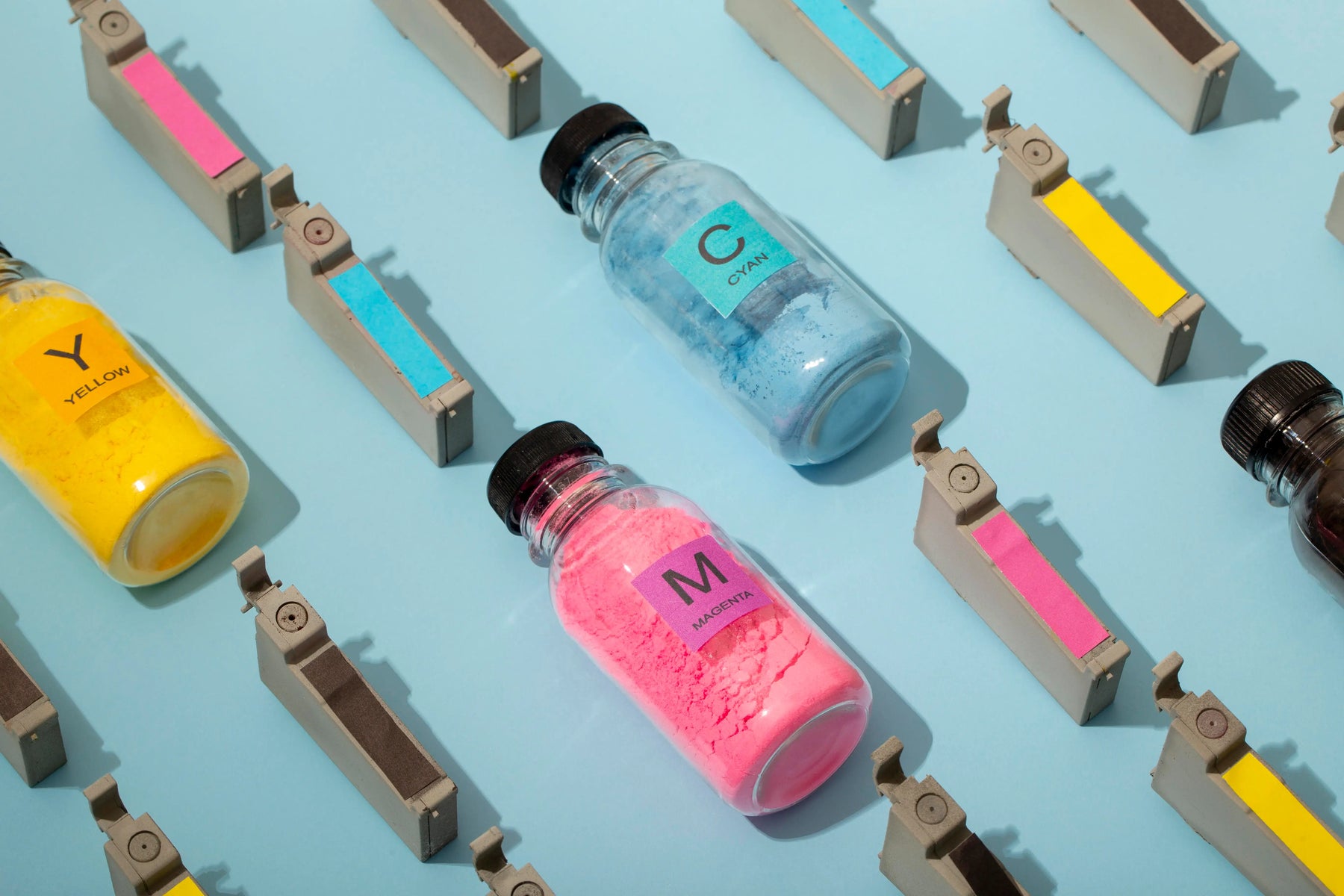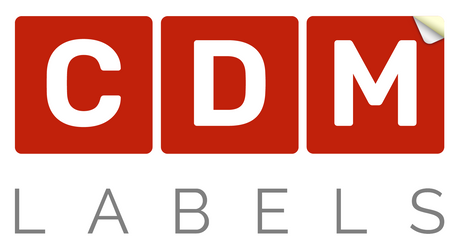
Can I Print Product Labels with a Thermal Printer? Everything You Need to Know
In today’s fast-paced industries, efficient product labelling is essential for smooth operations, brand consistency, and compliance. Whether you're managing stock, shipping orders, or packaging products, having a reliable labelling system is crucial. One common question businesses often ask is: Can you print product labels with a thermal printer?
You can print product labels with a thermal printer. Direct thermal printers are best suited for short-term labelling needs, whereas thermal transfer printers produce durable, long-lasting labels designed to withstand wear and environmental factors. Choosing the right printer type, label material, and adhesive ensures clear, efficient product labelling. CDM Labels provides tailored thermal label solutions.
At CDM Labels, we specialise in providing high-quality label solutions, including thermal labels tailored to various industries. In this guide, we’ll explore how thermal printers work, their suitability for product labels, and why they might be the right solution for your business.
What Is a Thermal Printer?
A thermal printer is a printer that produces images, text, and barcodes by applying heat to specially coated materials. Unlike inkjet or laser printers, thermal printers don’t require ink or toner, making them an efficient choice for businesses looking to streamline their labelling process.
There are two main types of thermal printers:
Direct Thermal Printing
Direct thermal printers use heat-sensitive labels. The printer head applies heat directly onto the label, causing the material to darken and form an image or text. This method is simple and cost-effective, ideal for temporary labels like shipping labels or labels for perishable goods.
Thermal Transfer Printing
Thermal transfer printers utilise a ribbon coated with wax, resin, or a blend of both. Heat from the printer head melts the coating, transferring the ink onto the surface of the label. This results in high-quality, durable prints suitable for long-term use, resistant to environmental factors such as heat, moisture, and chemicals.
Can You Print Product Labels with a Thermal Printer?
Yes, you can print product labels with a thermal printer—but the right type of thermal printer depends on your specific needs.
Direct Thermal for Product Labelling:
Direct thermal printing is well-suited for short-term labelling. If your product labels do not require long-term durability and won’t be exposed to heat, sunlight, or rough handling, this is a cost-effective solution. Common uses include:
-
Fresh food labels
-
Shipping labels
-
Retail price tags for fast-moving goods
Thermal Transfer for Product Labelling:
For more robust labelling needs, thermal transfer printers are the preferred choice. They produce long-lasting labels that can withstand wear, chemicals, and extreme temperatures. This makes them ideal for:
-
Product labels with extended shelf life
-
Pharmaceutical labels
-
Asset tracking
-
Industrial and warehouse labelling
Advantages of Using a Thermal Printer for Product Labels
Choosing a thermal printer offers several advantages, especially for businesses needing consistent, clear labelling:
-
Speed and Efficiency
Thermal printers are designed for high-speed printing, making them perfect for large-volume labelling environments such as warehouses or production lines.
-
Low Maintenance
With fewer moving parts and no need for ink or toner replacements (especially in direct thermal printing), maintenance is minimal, reducing downtime.
-
Cost-Effective
For businesses focused on operational efficiency, thermal printers provide a lower cost per label, particularly for direct thermal applications.
-
High-Quality Prints
Thermal printers deliver sharp text, crisp barcodes, and precise images, essential for scanning and product identification and ensuring compatibility with GS1 barcode standards.
-
Material Compatibility
Thermal printers work with a wide variety of label materials and adhesives, giving you the flexibility to tailor your labels to your products’ specific requirements.
Limitations to Consider
While thermal printers are versatile, it’s important to be aware of their limitations:
Direct Thermal Labels Fade Over Time
Labels printed using direct thermal technology can be sensitive to heat, sunlight, and abrasion. Over time, the print may fade, making them unsuitable for long-term applications.
Limited Colour Options
Thermal printers typically print in monochrome (black and white). If your product branding relies heavily on colour, other printing methods might be more appropriate for premium packaging.
Premium Label Aesthetic
If you’re looking for high-end, decorative labels for luxury products, thermal printing might not deliver the visual appeal you require. However, thermal transfer labels can still achieve excellent quality for more functional labelling.
What Types of Products Are Suitable for Thermal Label Printing?
Thermal printers are widely used across various industries due to their flexibility. Here are some common product categories well-suited to thermal label printing:
-
Food & Beverage Labelling: Expiry dates, nutritional information, and barcodes.
-
Retail Price Tags: Quick, efficient labelling of products with changing prices.
-
Pharmaceutical Labels: Long-lasting, durable labels that meet compliance standards.
-
Shipping & Logistics Labels: Fast production of address and tracking labels.
-
Inventory Management: Barcode labels for warehouse shelves, bins, and assets.
Choosing the Right Label Material
The effectiveness and durability of your thermal labels aren’t solely dependent on the printer itself—the material you choose plays a critical role in ensuring your labels meet the demands of your product environment. From product lifespan to exposure conditions, selecting the appropriate label material is essential for achieving reliable, long-lasting results.
At CDM Labels, we provide a wide selection of materials specifically designed for thermal printing, offering flexibility to suit various industries and applications.
Paper vs. Synthetic Labels: Which One Is Right for You?
1. Paper Labels Paper labels are a cost-effective option widely used across retail, logistics, and manufacturing sectors. They are ideal for short-term labelling needs where durability isn't a primary concern. Typical applications include:
-
Shipping labels
-
Retail price tags
-
Temporary inventory labels
Paper labels offer excellent print quality and are compatible with both direct thermal and thermal transfer printers. However, they may not perform well in environments exposed to moisture, chemicals, or abrasion, as they can tear or smudge over time.
2. Synthetic Labels For businesses requiring tougher, long-lasting labels, synthetic materials such as polypropylene, polyethylene, and polyester are the preferred choice. Synthetic labels provide:
-
Superior resistance to water, oil, chemicals, and solvents
-
Tear-proof properties
-
UV and temperature resistance, suitable for outdoor use or harsh environments
These attributes make synthetic labels perfect for:
-
Pharmaceutical packaging
-
Food and beverage labelling
-
Industrial asset tracking
-
Product labels that demand a premium, professional appearance
By assessing the conditions your product labels will face, you can confidently choose between the cost-effectiveness of paper or the resilience of synthetic options.
The Importance of Adhesive Selection
Equally important as the label face material is the type of adhesive backing you choose. The adhesive ensures your labels stay securely in place, even under varying environmental conditions.
Here are the main adhesive types offered at CDM Labels:
1. Permanent Adhesive This is the most common adhesive option, offering a strong, reliable bond to most surfaces. Ideal for:
-
Product labelling
-
Asset identification
-
Inventory and warehouse labelling
Once applied, permanent adhesives are difficult to remove without damaging the label or leaving residue.
2. Removable Adhesive If you require labels that can be cleanly removed without leaving adhesive marks, removable labels are your go-to. These are ideal for:
-
Temporary price tags
-
Promotional labels
-
Reusable containers
They offer flexibility, allowing you to reposition or remove the label as needed without compromising the product’s surface.
3. Freezer-Grade Adhesive Specifically engineered to withstand cold temperatures and moisture, freezer-grade adhesives maintain their adhesion in extreme conditions. They are commonly used in:
-
Food packaging for frozen goods
-
Laboratory sample labelling
-
Cold storage and transportation environments
Unlock Efficient Labelling with Thermal Printers
So, can you print product labels with a thermal printer? Absolutely. Whether you opt for direct thermal printing for short-term needs or thermal transfer printing for durable, long-lasting labels, thermal printers offer a reliable, efficient solution for a wide variety of product labelling applications.
The key to success lies in choosing the right printer type, label material, and adhesive for your products—something CDM Labels can expertly assist you with.
Need help finding the perfect thermal labels for your products? Contact CDM Labels today for expert advice and custom solutions.

